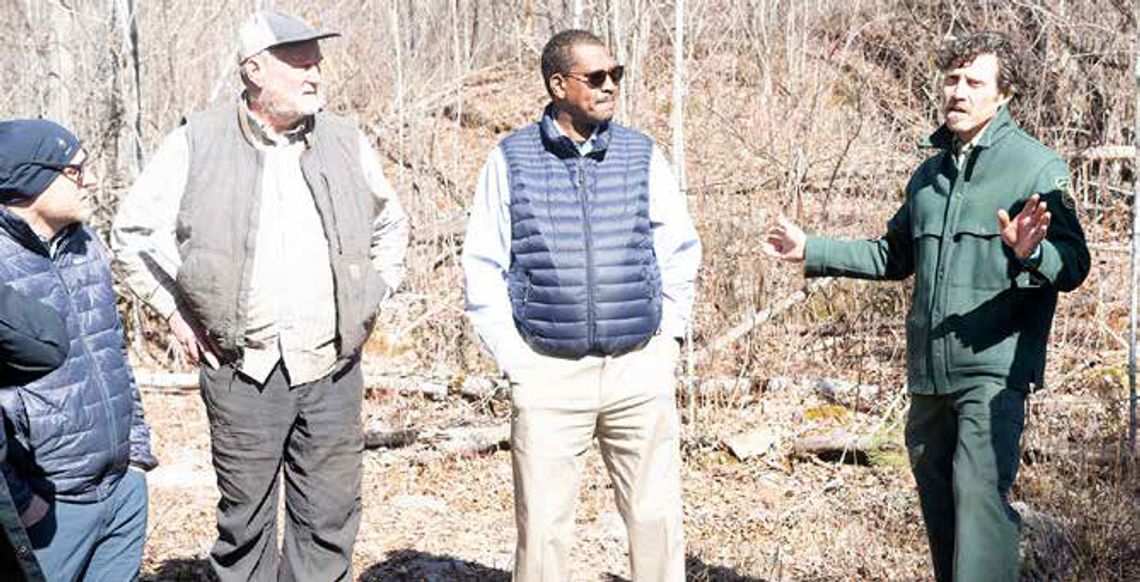USDA Under Secretary Dr. Homer Wilkes toured the Superior National Forest near the North Arm of Burntside Lake on Tuesday, March 12.
Wilkes visited the SNF to discuss the Inflation Reduction Act-funded collaborative wildfire risk reduction program with partners, Tribal members, and Forest Service employees.
Wildfire risk reduction work includes increasing wildfire awareness, hazardous fuels removal, and assisting communities in becoming more wildfire resistant.
Wilkes toured wildfire risk reduction projects, such as one the SNF has been working on near the North Arm of Burntside Lake, to learn more about what it takes to prevent severe wildfires.
The Under Secretary said he visited in part because Superior National Forrest is potentially one of the highest wildfire-risk forests in the eastern part of the United States.
Wilkes underscored the importance of additional funding to continue wildfire reduction work and highlighted the recently announced $100 million Collaborative Wildfire Risk Reduction Program (CWRRP) funding opportunity, with up to $20 million possible for the Superior National Forest.
To be eligible for CWRRP funding, projects must be located in the wildland-urban interface, within highrisk fire sheds identified in the Forest Service Wildfire Crisis Strategy, or in an area with very high wildfire hazard potential.
“Superior National Forest is one of two forests in the eastern area that are competitive for this funding,” said Forest Fire Management Officer for the Superior and Chippewa National Forests, Nick Petrack. “We have several projects up on the North Arm this funding would be super helpful for.”
Petrack said how the money would also go to projects all over the SNF, including projects up the Gunflint Trail, the Tofte and Sawbill area, and up the Echo Trail.
“The funding would be utilized to finish some of the projects that we’ve been working on that are kind of shovel ready, we’re just waiting for some people power and some money to help implement those,” said Petrack.
Wilkes said these funds, along with other major investments and initiatives already underway, could help the Forest Service significantly increase fuels and forest health treatments in areas of need across the country.
“I’m excited to see that the Superior National Forest, working in collaboration with others, is looking to take advantage of these new funding opportunities,” Wilkes said.
All of Minnesota has significant wildland fire potential due to dry conditions, making wildfire mitigation that much more important.
In the Superior National Forest, there are approximately 198,000 acres that are considered at risk and eligible for these funds.
Minnesota is one of 24 eligible states for CWRRP funding, identified by a science- based analysis showing they have a high level of wildfire risk in specific areas, such as the North Arm of Burntside Lake.
.jpg)












